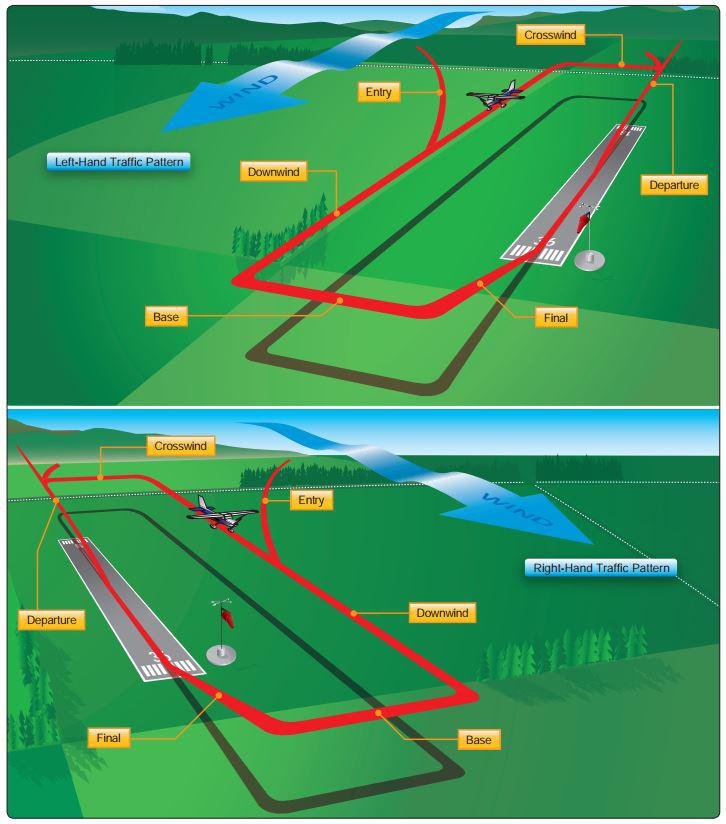Basic Private Pilot Ground School
-
Lesson 1: Your First Flight6 Topics|1 Quiz
-
Lesson 2: Maneuvers and the Traffic Pattern6 Topics|1 Quiz
-
Lesson 3: Understanding the Wind and Turns6 Topics|1 Quiz
-
Lesson 4: AOA, Stalls, and Other Scary Things5 Topics|1 Quiz
-
Lesson 5: Ground Reference, Maneuvers, and FARs4 Topics|1 Quiz
-
Lesson 6: Building Good Landings5 Topics|1 Quiz
-
Lesson 7: The Less Busy Airspace: G, E, D3 Topics|1 Quiz
-
Lesson 8: Class A, B, and C Airspace: The Busier Side of the Sky4 Topics|1 Quiz
-
Lesson 9: Flying Blind and Performance Calculations4 Topics|1 Quiz
-
Lesson 10: Soft and Short Field T.O.'s + Landings4 Topics|1 Quiz
-
Lesson 11: Start Your Engines: Engines, Systems, and Instruments6 Topics|1 Quiz
-
Lesson 12: Weight and Balance, Navigation Systems4 Topics|1 Quiz
-
Lesson 13: Luck with Weather6 Topics|1 Quiz
-
Lesson 14: Your First SOLO!2 Topics|1 Quiz
-
Lesson 15: VFR Charts and Navigation5 Topics|1 Quiz
-
Lesson 16: Weather Charts and Services6 Topics|1 Quiz
-
Lesson 17: Aeromedical Factors, ADM, FARS5 Topics|1 Quiz
-
Lesson 18: Flying at Night3 Topics|1 Quiz
-
Lesson 19: Cross Country Flight Planning4 Topics|1 Quiz
-
Lesson 20: Test Prep5 Topics|2 Quizzes
The Traffic Pattern
Flying the Traffic Pattern:
In this topic, we’ll cover the standard airport traffic pattern, how to stay in the airport traffic pattern without going out to the practice area, as well as how to re-enter the traffic pattern when returning from the practice area or coming back from another airport.
First watch the video above, and check out the diagrams below to get a good basic understanding of how you would approach the airport. Then you can check out the extra video below to see a complete view of what all that looks like when put into practice as you come into land at a non-towered airport.
Two ways to enter:
There are two approved ways to enter the pattern at a non-towered airport (the one on the left is my personal preferred method, especially in a high wing airplane).
The option on the left shows how you would fly at an altitude 500′ above the posted pattern altitude (pattern altitudes are typically posted between 600′-1000′ above field elevation) to cross over “midfield” giving you the opportunity to both look down at the windsock and see what is going on down there on the ground in terms of wind and traffic, and also it should keep you 500′ above all other traffic in the pattern in case someone isn’t talking on the radio (remember: radios are not required to be installed in airplanes when flying in Class G or E airspace (non-towered airports)). After crossing over midfield and observing the traffic from above, you then make a descending right turn to form a “teardrop” entry to the pattern, joining the left downwind on a 45 degree angle and at pattern altitude.
The purpose behind this maneuver is to both give you better sight and separation between aircraft, as well as make it easy for you to turn right out of the left downwind, if someone was already established on it and you needed to yield to them (you are always supposed to yield to airplanes already established in the pattern, or any airplane established on final to land. REMEMBER, the aircraft that is established on final and is lower has the right of way (since they are somewhat more “committed” to landing than an airplane that is higher), but this is not to be taken advantage of to gain right of way (i.e. quick dive to the ground to be like “Haha, now I’m lower, move out of my way”, we frown upon this in aviation).
The entry procedure to the right is very similar; however, you would approach to cross the field at pattern altitude, and all you would need to do after observing the wind and traffic on the ground is turn left to join the pattern. Of course, yield to other traffic already established in the downwind. While this may seem easier, what I don’t like about it is that now you are searching for traffic that would be approaching from your right when you are joining the downwind instead of off your left, and in many airplanes there can be a blind spot for the pilot off of your right shoulder.

But what about towered airports?
At towered airports the same basic rules still apply, however rather than just flying a certain left or right traffic pattern, or entering every time on the 45 degree downwind, the tower will issue specific instructions each time as to how they want you to approach the airport. For example, the tower may tell you to just fly straight in if you are already lined up with the runway, or enter the pattern on a right base instead of a left 45 degree downwind. We’ll cover this much more in-depth in a later lesson with lots of examples!
